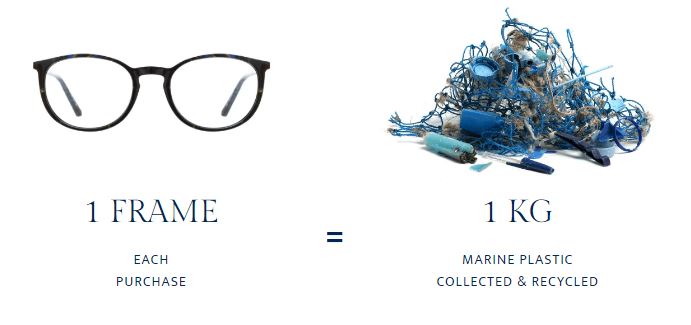plant-based plastics… products from plastic waste… plastics as eco-alternatives…
.
Plastic is everywhere in the media.
This product deals with two tricky issues – concrete and plastic:
How sweet! Street bollards made from sugar cane are latest weapon in war on pollution
- New street bollards made of sugar cane could be installed on Britain’s roads
- The £150 barriers are cheaper and lighter and produce less CO2 than concrete
- The bollards are made from a plant-based plastic derived from the sugar cane
Council trials ‘non-crete’ bollards made from sugar cane | Daily Mail Online
These very stylish products are sustainable and ethical:
Sea2see design and produces optical frames and sunglasses in Italy, as well as watches in Switzerland, entirely made with recycled marine plastic collected by fishermen in Spain, France and West Africa.

Sustainable eyewear and watches made 100% with recycled marine plastic – Sea2see Eyewear and Watches
Plastics are replacing metals in car design:
Plastics have played a long-standing and important role in supporting automotive innovation, particularly by making it possible for cars to become more fuel efficient and reduce their environmental impact. Traditional automotive materials like metal are rigid and heavy, but plastics enable flexibility in design, meeting increased safety standards and providing aesthetic options while keeping the vehicle lightweight. When designed properly, reinforced plastics can provide equivalent strength and stability to metal. This malleability makes plastics an ideal material for vehicles.
Plastics Fast-Track Electric Vehicle Innovation
Everyone’s now thinking the circular economy:
No matter how much we may try and move away from plastics, especially those that are single-use, they are wonder-materials with properties we can’t seem to do without. The COVID-19 pandemic has particularly reminded us of this, with PPE, LFDs and other disposables becoming such a key part of everyday life. But no matter how earnestly we might wash out, separate and recycle our plastics at home, one look at the Great Pacific Garbage Patch is enough to incite a feeling of hopelessness. But thanks to scientific advancements, there may be hope still. The recent report from the European Patent Office (EPO) Patents for tomorrow’s plastics describes promising innovation over the last decade in two key areas:
- how we can recycle plastics more effectively in order to move closer to a circular economy; and
- how the relatively new field of bioplastics may help us to avoid the complex issue of recycling altogether.
In this article, I pick out interesting trends and examples from a trainee patent attorney perspective, and discuss what might be expected from the plastic technology scene in the future...
Including companies:
Using our voice to build a circular plastic economy | Unilever
Driscoll’s Working to Scale Circular Plastics Economy, from Field to Clamshell – Sustainable Brands